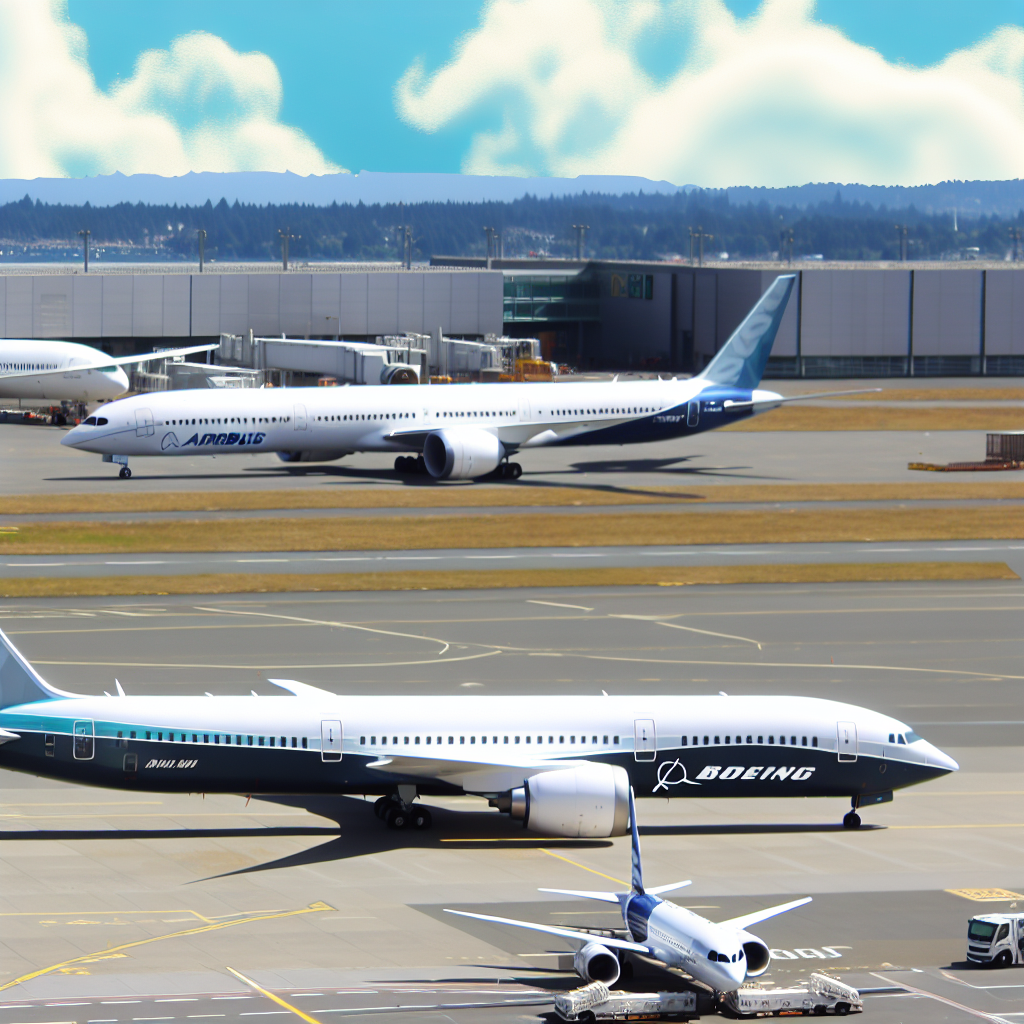TOULOUSE— Airbus has successfully delivered around 300 aircraft by mid-2025, leading Boeing, which reported approximately 278 units. This achievement underscores Airbus’ consistent output from its Toulouse and Hamburg facilities, even amidst ongoing engine supply shortages.
Meanwhile, Boeing is witnessing a gradual improvement in its delivery pace, although it continues to face challenges stemming from regulatory scrutiny, quality control issues, and a series of prominent safety incidents, one of which included a tragic crash involving Air India (AI) earlier this year.

As of June 2025, the competitive landscape between aircraft manufacturers remains intense, yet current statistics favor Airbus.
According to data from Forecast International, Airbus had achieved approximately 300 aircraft deliveries by the end of June, with 243 officially accounted deliveries through May and 57 in June.
Boeing closely followed with around 278 aircraft, comprising 220 deliveries through May and an estimated 58 in June, slightly surpassing Airbus for the month.
However, this marginal monthly lead did little to bridge the overall gap established by Airbus’ consistency early in the year. The company maintained strong delivery momentum, primarily through its A320neo family, A350s, and A220s, delivering 34, 8, and 11 units of each respectively in June.
Boeing experienced a boost in June through the delivery of 737 MAX and 787 Dreamliner units; however, ongoing challenges related to FAA oversight, manufacturing variances, and door plug inspections have kept Boeing’s overall output trailing behind Airbus.
Boeing Q2 2025 Deliveries Surge
Boeing reported delivery of 150 commercial aircraft in Q2 2025, representing a 15% increase over Q1, marking its best second-quarter results since 2018. The performance included a resurgence in deliveries to China, along with robust output from the Boeing 737 MAX.
Deliveries to Chinese carriers resumed in June, featuring aircraft shipped to Xiamen Airlines, China Southern, Air China, and Minsheng Financial Leasing. Most deliveries originated from Seattle (SEA), Boeing’s primary delivery hub.
The total commercial aircraft deliveries by Boeing reached 280 units in the first half of 2025, fueled by higher production across all widebody and narrowbody platforms. In the months of April through June, deliveries included 104 737s, 24 787s, 13 777s, and 9 767s, with June alone yielding a total of 60 aircraft—marking the best monthly performance since December 2023.
Noteworthy was the Boeing 787 Dreamliner program, which saw a nearly doubling of deliveries from Q1 to Q2, rising from 13 in the first quarter to 24 in the second quarter.
This increase followed a relaxation in trade tensions between the U.S. and China, enabling eight aircraft—predominantly 737 MAXs—to reach Chinese fleets. Juneyao Air (HO) received a deferred 787-9, while Air China Cargo (CA) took delivery of a 777 Freighter.
Quarterly Comparison and Order Highlights
Boeing’s Q2 production indicated a 15% jump from the 130 aircraft delivered in Q1, with widebody deliveries almost doubling:
| Aircraft | Q1 | Q2 | YTD |
|---|---|---|---|
| 737 | 105 | 104 | 209 |
| 767 | 5 | 9 | 14 |
| 777 | 7 | 13 | 20 |
| 787 | 13 | 24 | 37 |
| Total | 130 | 150 | 280 |
In addition to strong deliveries, Boeing secured 427 aircraft orders in Q2, demonstrating a significant recovery from merely 25 orders received in Q2 2024. May was particularly fruitful, as the company recorded 303 gross orders—the highest monthly figure since 2023.
A standout request came from Qatar Airways (QR), which placed an unprecedented order for 160 aircraft, consisting of 130 Boeing 787 Dreamliners and 30 777-9s, with an option for 50 additional units.
737 MAX Production at Full Capacity
The production of the 737 MAX remains at the FAA-imposed maximum of 38 aircraft per month, set following the door plug incident with Alaska Airlines (AS) in January 2024. To enhance quality and safety, Boeing has made considerable investments and changes.
In the latest Chief Aerospace Safety report, the company noted enhancements in all six safety and quality benchmarks.
CEO Kelly Ortberg remains hopeful that production may soon escalate to 42 jets per month, contingent on FAA approval. Executives emphasized the commitment to maintaining high production quality alongside meeting global delivery targets.
Regulatory Pressure Weighs on Boeing’s Performance
Delays in Boeing’s production in 2025 are not solely due to supply chain issues; the company’s safety reputation has come under intense scrutiny following several significant incidents.
The most notable was Air India Flight AI171, involving a Boeing 787-8, which tragically crashed, resulting in 241 fatalities. This incident heightened concern over the safety standards of the 787 model.
Earlier this year, another incident involving a United Airlines (UA) 787 experienced a violent pitch-down caused by a faulty pilot seat mechanism, further eroding public trust.
Moreover, reports of smoke in the cabin on some 737 MAX aircraft, as reported by Bloomberg, compounded Boeing’s ongoing safety challenges, overshadowing its improving delivery metrics.
In response to these situations, Boeing has initiated leadership changes and is collaboratively working with the Federal Aviation Administration (FAA) to enhance inspection processes and restore operational reliability, although rebuilding its reputation has proved more challenging than addressing logistical issues.
Airbus Builds Momentum with Operational Stability
Operating out of Toulouse (TLS) and Hamburg (XFW), Airbus has shown considerable resilience in navigating similar challenges.
Despite facing engine shortages, especially concerning the Pratt & Whitney PW1000G engines—which have temporarily halted dozens of aircraft, including 40 Wizz Air (W6) jets—Airbus has maintained a steady average monthly output of approximately 50 jets.
The manufacturer has strategically utilized its global supply chain and cross-program efficiencies to ensure consistent deliveries across various product lines. This approach emphasizes gradual production increases and less dependency on specific suppliers or programs.
The A220 and A350 programs, although smaller than the A320neo, have each contributed significantly to Airbus’ overall delivery totals.
Stay connected and keep informed. Follow us on social media for real-time updates.
Join our community on Telegram Group for the Latest Aviation Updates. Additionally, find us on Google News.
Based on an article from aviationa2z.com: https://aviationa2z.com/index.php/2025/07/09/boeing-beats-airbus-in-june-2025-deliveries/?utm_source=rss&utm_medium=rss&utm_campaign=boeing-beats-airbus-in-june-2025-deliveries



